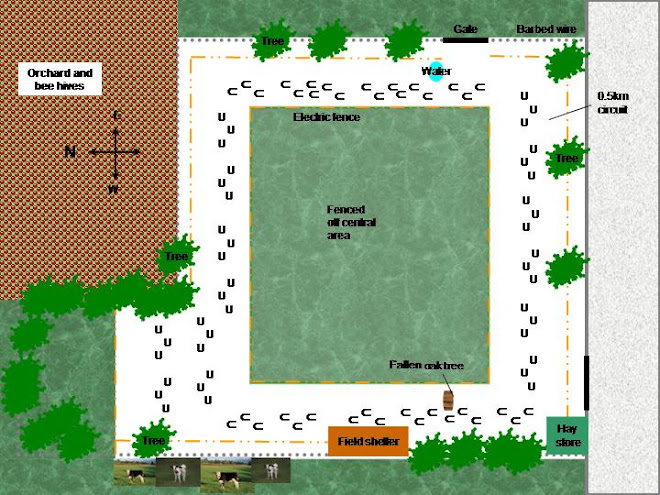And you thought that all you had to worry about was your horse?
They might not be
fluffy and cuddly and have super cute silvery moustaches, but the microbes in your horses gut deserve your love...... :-) if only because keeping them healthy helps keep your horse healthy too.
You'd be forgiven for thinking I've given microbes quite enough attention in
this earlier post. I certainly did, but some recent conversations with various horsey peeps including experienced professionals made me realise just how little is known about hind gut acidosis (where the hind gut becomes too acidic).
The symptoms of hind gut acidosis can range from mild short term 'not quite right' to reduced appetite, mild colic symptoms, diarrhoea, development of repetative behaviours such as wood chewing, weaving, and box walking,weight loss, reduced performance and according to some sources eventually laminitis. The first thing you may notice is sour smelling, loose droppings.
Techy Stuff
The equine digestive system alters ph along its length; the stomach is acidic, the cecum is relatively neutral and the colon is alkaline.
The beneficial fibre digesting bacteria in the cecum such as Ruminococcus albus and Fibrobacter succinogenes are sensitive to decreases in pH. For optimal performance, these bacteria prefer an environment with a pH between 6.5 and 7.0. When pH drops below 6.0, which is often the case with subclinical acidosis, fibre digesting bacteria become less efficient and begin to die off.
In contrast, lactate-producing and lactate-utilizing bacteria thrive in an environment with a low pH. Certain microorganisms such as Streptococcus bovis actually shift their metabolism and produce lactic acid rather than VFA (volatile fatty acids) when exposed to acidic conditions, serving only to compound the problem.
Some research uses ph testing of droppings to test for cecal acidosis, but this doesn't appear to be a widespread, general practice. Certainly a number of vets I have spoken to were not that familiar with the practice, but I can't help but think I might try it, just to see what I get.
Hind gut acidosis is usually triggered by over ingestion of sugars/starches. There is some anecdotal evidence that other factors, such as stress or over use of antibiotics may also be implicated.
If you suspect your horse has hind gut acidosis, and you know you are not over feeding sugars/starches, then please speak to your vet about potential causes and how to manage them. Acidosis is not trivial and shouldn't be ignored.
Personal note
My own horse Grace arrived with sour smelling droppings and had them for ages, months even. At first I just dismissed it as 'normal for her'. Now I know it is not normal and I can help her by feeding a 'proper' good quality probiotic. (As well as watching her diet etc).
Grace also makes me think about causes, her diet could not practically be any lower in sugar/starch, but she still on occasion gets rancid droppings. I pretty much have these incidents tied into stressful episodes. So as I can not predict when Grace will stress out, I now feed probiotics routinely. A little expensive, but better than her being ill.























